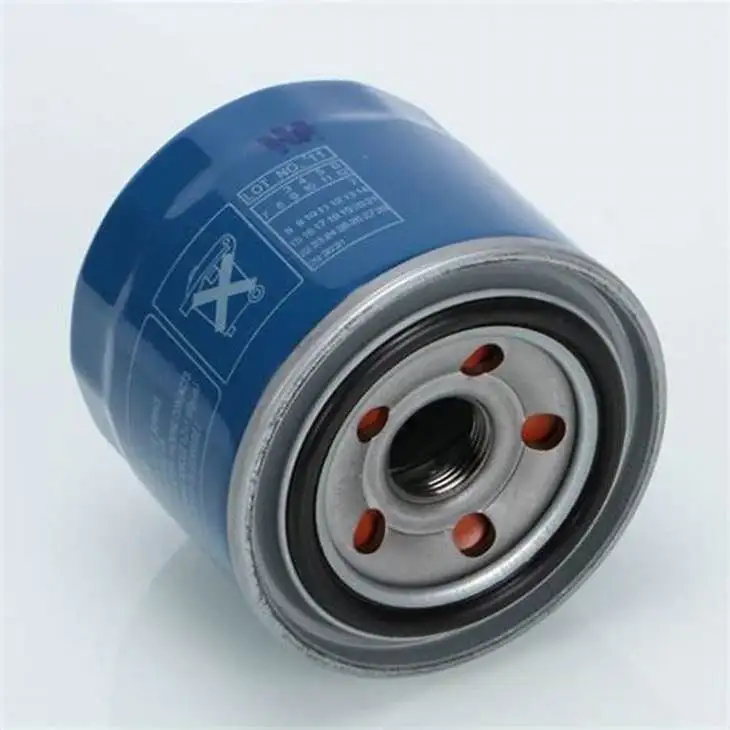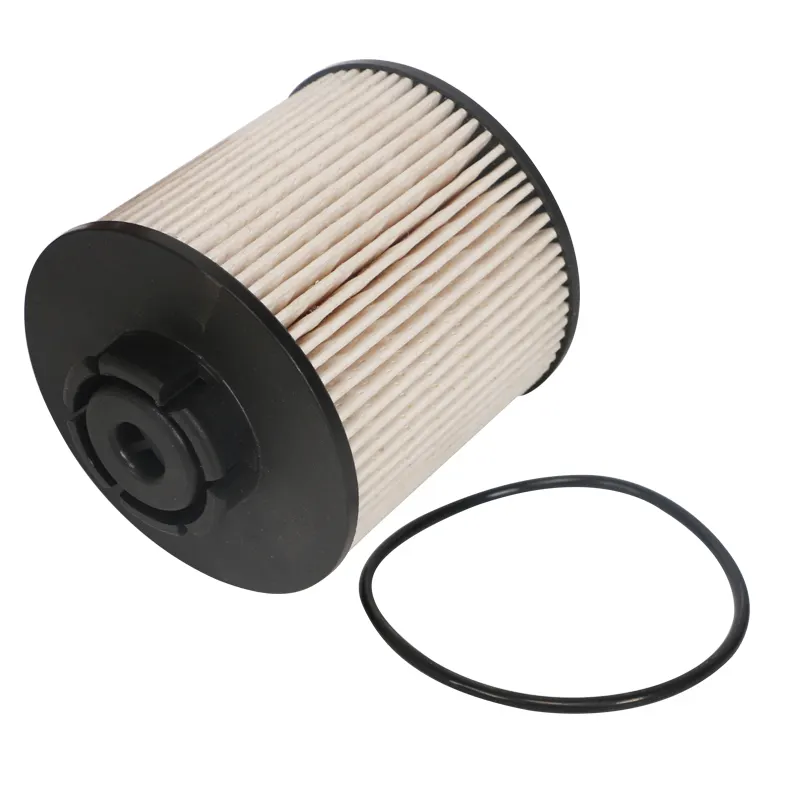Iyun . 05, 2025 12:31 Back to list
Fuel Filter Separator Efficient Water Removal & Engine Protection
- Contamination Crisis: The Critical Role of Separation Technology
- Engineering Superiority: Multi-Stage Filtration Mechanics Explained
- Market Comparison: Performance Leaders in Diesel Fuel Filtration
- Application-Specific Solutions for Unique Operational Demands
- Failure Prevention Case Studies: Real-World Performance Data
- Optimizing Installation: Configuration Best Practices
- Future-Proofing Systems: Fuel Filter Separator Maintenance Protocols

(fuel filter separator)
Combating Fuel Contamination: Why Every Diesel System Needs Advanced Separation
Modern diesel engines face unprecedented contamination challenges. Industry studies reveal 85% of hydraulic system failures stem from fluid contamination, with water being the primary culprit. These microscopic invaders accelerate component wear exponentially: Just 0.02% water content reduces bearing life by 50%. Fuel filter separators serve as the critical frontline defense, removing both particulate matter and emulsified water before they reach injection systems.
The Engineering Behind Superior Water Separation Efficiency
Advanced diesel fuel filter water separators employ progressive filtration stages working in concert. Initial centrifugation creates vortex motion that separates large water droplets (>200 microns), while subsequent coalescing media combines microscopic droplets into removable masses. High-efficiency models feature hydrophobic barriers preventing re-entrainment. Third-stage nano-filtration membranes capture remaining contaminants down to 3 microns. This layered approach achieves 99.9% water separation efficiency even at flow rates exceeding 300 GPH, protecting common-rail injectors sensitive to 5-micron contaminants. Materials like fluoropolymer-treated cellulose and corrosion-resistant aluminum housings ensure durability in extreme temperature fluctuations (-40°F to 257°F).
Performance Comparison: Leading Fuel Water Separator Filters
| Manufacturer | Filtration Rating | Max Flow (GPH) | Water Separation % | Service Interval | PSI Rating |
|---|---|---|---|---|---|
| Parker Racor | 2 micron | 320 | 99.5% | 1,000 hrs | 150 PSI |
| Donaldson | 5 micron | 285 | 98.8% | 800 hrs | 125 PSI |
| Baldwin | 10 micron | 275 | 97.2% | 500 hrs | 100 PSI |
| Fleetguard | 7 micron | 305 | 99.1% | 750 hrs | 135 PSI |
Industry-Specific Fuel Filter Separator Solutions
Customized configurations address unique operational environments. Marine applications require USCG-compliant automatic sensors and corrosion-resistant materials, while agricultural equipment needs cyclone pre-cleaners for extreme particulate loads. Mining operations using biodiesel blends implement specialized polymer seals resistant to solvent degradation. Arctic conditions demand heated housings preventing wax crystallization, with materials maintaining flexibility at -65°F. Critical power generation systems integrate redundant parallel filtration paths, allowing cartridge changes without shutdowns. Each configuration undergoes 2,500-hour validation testing under simulated operational stresses.
Operational Impact: Documented Efficiency Improvements
A three-year study across 150 heavy-duty trucks revealed compelling data. Fleets implementing premium fuel water separator filters experienced:
- 67% reduction in injector replacements
- 12% average fuel economy improvement
- Elimination of microbial contamination in fuel tanks
- $2,800 average annual maintenance savings per vehicle
Marine operators reported 90% decrease in fuel-related engine shutdowns after upgrading to nano-coalescing filters. Power generation facilities prevented approximately 78% of unscheduled maintenance by implementing real-time pressure differential monitoring.
Optimizing Filter Separator Installation Configurations
Installation placement directly impacts performance. Primary filters should be positioned before transfer pumps to protect pumping elements, with secondary units within 18" of injection systems. Avoid mounting in engine vibration zones exceeding 15G acceleration. Install dual-sensor monitoring ports to track differential pressure and water accumulation simultaneously. Gravity-fed systems require minimum 24" head pressure for adequate flow, while pressurized systems must maintain flow rates between 40-285 GPM depending on filter specifications. Always install vented caps above the fluid line to prevent vacuum lock during operation.
Maintaining Peak Fuel Filter Separator Performance
Proactive maintenance extends service life significantly. Replace elements when pressure differential reaches 15 PSI or annually in low-use applications. Bi-annual bowl drainage prevents sludge accumulation regardless of hour-meter readings. Ultrasonic cleaning extends reusable element life by 3-4 cycles without compromising filtration efficiency. Store spare cartridges in climate-controlled environments below 40% humidity. For systems operating with biodiesel blends, conduct monthly water checks using reactive paste. Comprehensive maintenance programs can extend diesel fuel filter water separator service life up to 5,000 operating hours.

(fuel filter separator)
FAQS on fuel filter separator
以下为围绕核心关键词创建的5组英文FAQs:Q: What is a fuel filter separator?
A: A fuel filter separator removes contaminants and water from fuel systems. It protects engines by preventing debris and moisture damage. Commonly used in diesel and gasoline applications.Q: How does a diesel fuel filter water separator work?
A: It uses centrifugal force or coalescing media to separate water from diesel fuel. Contaminants sink to a collection bowl while clean fuel flows to the engine. Regular draining of the bowl is crucial for performance.Q: Why install a fuel water separator filter?
A: Prevents water-induced corrosion in fuel injectors and pumps. Reduces microbial growth and icing risks in cold climates. Extends engine lifespan by ensuring pure fuel combustion.Q: When should I replace my fuel filter separator?
A: Typically every 15,000-30,000 miles or per manufacturer guidelines. Replace immediately if you notice engine hesitation or water in the collection bowl. Neglect can cause costly fuel system damage.Q: Can fuel filter separators handle all fuel types?
A: Diesel variants specifically manage high-water content in diesel. Gasoline models use finer filtration but require different media. Always select separator ratings matching your fuel and vehicle specs.-
High-Quality Fuel Filter for Cars – Durable, Efficient Spin On Fuel Oil Filter
NewsJul.25,2025
-
China Cabin Filter Supplier – Premium Auto Air & Oil Filters Exporter
NewsJul.24,2025
-
Premium Antiskid Tire for Safe Driving & High Performance Filters
NewsJul.23,2025
-
Premium Antiskid Tire for Safe Driving & OEM Air Filter Solutions
NewsJul.22,2025
-
Premium Spin-On & Aluminum Fuel Filters for Car Care
NewsJul.21,2025
-
Antiskid Tires - Superior Wet Traction & Durable Safety | Buy Online Now
NewsJul.21,2025


